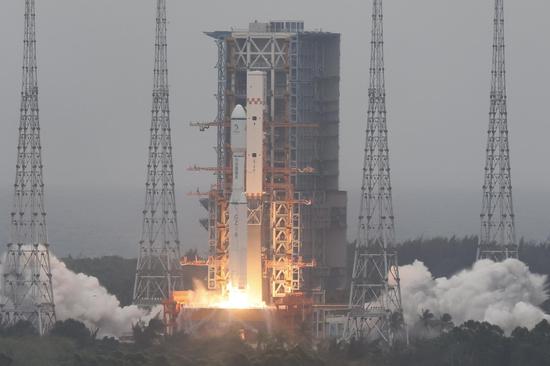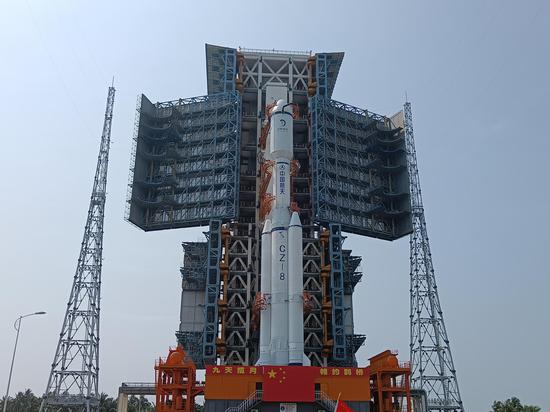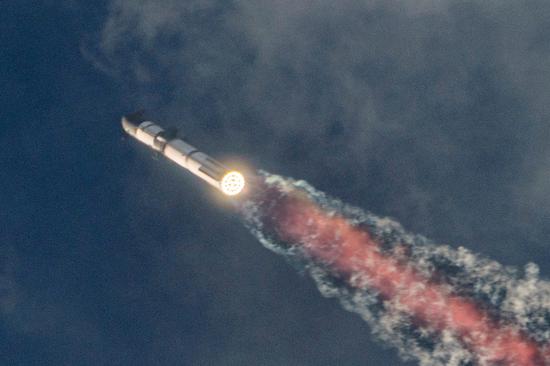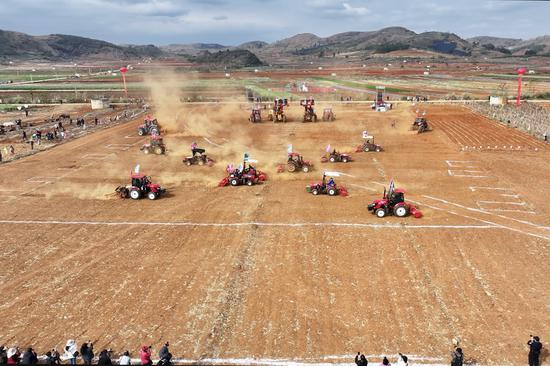Launch: New satellite boasts new tech, stronger capacity
China launched a relay satellite on Wednesday morning to lunar orbit, which is expected to pave the way for the country's prospective trailblazing expeditions to the moon.
The Queqiao 2, or Magpie Bridge 2, satellite was lifted atop a Long March 8 carrier rocket that blasted off at 8:31 am from a coastal launchpad at the Wenchang Space Launch Center in China's southernmost island province of Hainan.
After flying about 24 minutes, the satellite was released from the rocket and entered a lunar transfer trajectory. At the same time, the solar wings and communication antennas smoothly unfolded.
Following the completion of the maneuvers, the Queqiao 2 began its journey toward the moon, according to Ge Ping, one of the senior officials at the China National Space Administration who are overseeing the lunar programs.
"The launch took place on time and the satellite entered its trajectory with good accuracy, laying a solid foundation for its coming operations," Ge said.
Over the next few days, the spacecraft is scheduled to carry out a series of maneuvers, such as a midcourse trajectory correction and a braking operation, before it enters an elliptical frozen orbit to become the second relay satellite above the moon.
After its arrival in the predetermined orbital position, Queqiao 2 is set to conduct two-way communication tests with the Chang'e 4 probe, which is on the lunar surface, and Chang'e 6, which is waiting to be launched at the Wenchang center, to examine its performance, according to Ge.
Developed by the China Academy of Space Technology, Queqiao 2 is based on the CAST2000 satellite framework. It weighs about 1.2 metric tons and has two major payloads — a 4.2-meter parabolic antenna for communications with lunar probes and a 0.6-meter parabolic antenna to transmit data to ground control.
Queqiao 2 is primarily tasked with relaying signals and data during the Chang'e 6 robotic mission, which is scheduled to be launched by a Long March 5 heavy-lift rocket before July.
In the long term, the satellite will also serve the Chang'e 7 and 8 missions. These will be the basis for an ambitious multinational plan known as the International Lunar Research Station, which is expected to be built in the 2030s.
Those missions are expected to give new momentum to China's lunar exploration endeavors, which have already gained remarkable feats.
China commenced its lunar program in 2004 and has launched five robotic probes to the moon since 2007. The most recent mission, Chang'e 5, landed on the moon in December 2020 and soon sent 1,731 grams of lunar samples back to Earth, achieving the historic accomplishment about 44 years after the last lunar substances were brought back from the moon.
If everything goes according to plan, the Chang'e 6 will touch down in the South Pole-Aitken Basin, a gigantic crater on the far side of the moon and the largest and deepest known basin in the solar system, and collect dust and rock samples. That will be a groundbreaking endeavor that is challenging, sophisticated and has never been done before.
Tidal forces on Earth slow the moon's rotation to the point where the same side always faces Earth. The other side, most of which is never visible from Earth, is the moon's far side and has been a subject of scientific speculation and popular culture since the Apollo era.
Though the far side had been extensively photographed by spacecraft, starting with a Soviet probe in 1959, no probe had ever touched down on it until China's Chang'e 4 mission, which landed in the South Pole-Aitken Basin in January 2019.
Communication services between the Chang'e 4 and Chang'e 6 spacecraft and Earth require relay satellites due to their special locations.
Queqiao 1, the predecessor of Queqiao 2, was lifted by a Long March 4C rocket from the Xichang Satellite Launch Center in Sichuan province in May 2018. The aging satellite now remains operational in a halo orbit to transmit signals for the Chang'e 4 mission.
Compared with the Queqiao 1, the new relay satellite incorporates new technologies, more functions and stronger capacity.
Beside its relay operation, Que-qiao 2 also carries scientific equipment including an extreme ultraviolet camera and an array neutral atom imager.
In addition to Queqiao 2, two experimental satellites, Tiandu 1 and 2, were also lifted by the Long March 8 rocket to verify new communication and navigation technologies, according to the space administration.
Wednesday's flight was China's 12th space mission this year. It also marked the third mission of the Long March 8, a medium-lift rocket designed and built by the China Academy of Launch Vehicle Technology, and the first time the type has been used for a lunar mission.
Engineers at the academy worked out a new technology that enables the rocket to withstand the effects of upper atmospheric winds, which are often a hazard to a vertically flying craft.
Moreover, engineers put an additional coat of heatproof paint on the Long March 8 to offset the extreme heat that challenges every rocket bound for a lunar transfer trajectory, according to the academy.


















































 京公网安备 11010202009201号
京公网安备 11010202009201号